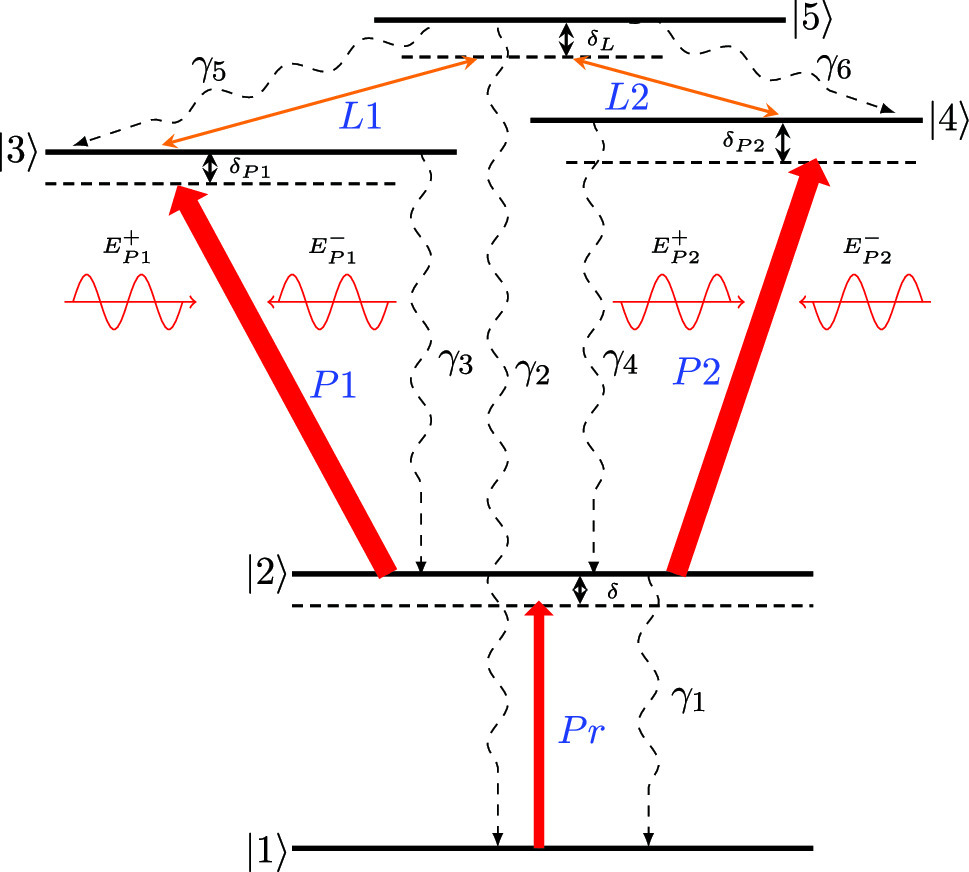https://doi.org/10.1140/epjd/s10053-024-00842-6
Regular Article - Optical Phenomena and Photonics
Microwave-controlled two-dimensional atom localization in a five-level Rydberg atom-laser interaction system and its application as a phase-diffraction cross-grating
1
Department of Physics, Aliah University, IIA/27, Newtown, 700160, Kolkata, India
2
Department of Physics, Surendranath College, 24/2, Mahatma Gandhi Rd, 700 009, Kolkata, India
Received:
17
October
2023
Accepted:
5
April
2024
Published online:
30
April
2024
We present a microwave mediated two-dimensional (2D) atom localization scheme involving Rydberg states. The localization of Rydberg atoms is realized in terms of the absorption of the optical probe field that connects the ground state with a four-level diamond-like closed-loop formed by two pump fields (producing mutually orthogonal standing-waves) and two microwave fields (which are running waves)-driven atomic transitions. It is observed that the probe laser is absorbed by the cold atoms in 2D plane which forms parallel line, wave-like line, elliptical- and lattice-like patterns. These patterns signify atom localization in 2D space. We have explored the influence of probe detuning, microwave field strength ratios and relative phase between them, van der Waals and dipole–dipole interactions between the atoms in the Rydberg states on the atom localization. The pump strength-to-microwave strength ratios corresponding to the two atomic transition branches, configuring the diamond-like closed-loop is found to affect the localization pattern for different relative phases. Interestingly, the strength ratios of the pump and microwave fields follow a balancing condition when discrete lattice-like patterns appear. This balancing condition is similar to the Wheatstone bridge balance condition for the electrical circuit. Besides, a possible application of this five-level system as a phase-diffraction cross-grating is presented by examining the variation of first-order diffraction intensity w.r.t. the probe detuning and the two microwave field strength ratios.
Copyright comment Springer Nature or its licensor (e.g. a society or other partner) holds exclusive rights to this article under a publishing agreement with the author(s) or other rightsholder(s); author self-archiving of the accepted manuscript version of this article is solely governed by the terms of such publishing agreement and applicable law.
© The Author(s), under exclusive licence to EDP Sciences, SIF and Springer-Verlag GmbH Germany, part of Springer Nature 2024. Springer Nature or its licensor (e.g. a society or other partner) holds exclusive rights to this article under a publishing agreement with the author(s) or other rightsholder(s); author self-archiving of the accepted manuscript version of this article is solely governed by the terms of such publishing agreement and applicable law.





